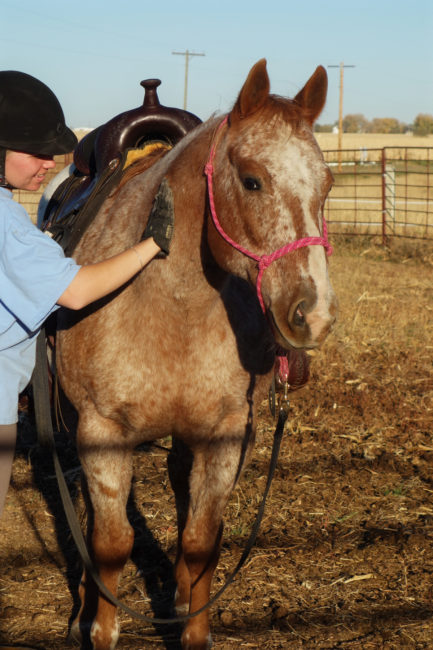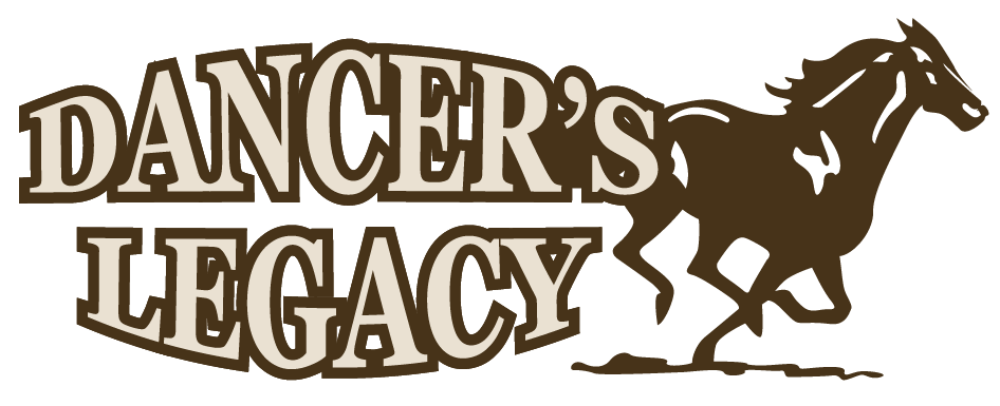Fitting a Saddle

It is not always possible or within our budget to fit both our horse and ourselves perfectly, so who should take priority?
Without question, it should be the horse first!
Would you want to walk around all day or run a marathon in an ill-fitting pair of shoes? This is very similar to what an ill-fitting saddle is like to a horse. Only imagine carrying a heavy backpack (a rider) while in those shoes. Whether too loose or too tight, both cause discomfort.
Many saddle problems are commonly misdiagnosed as behavior or attitude problems. General crankiness can be a sign that your horse is uncomfortable. Put yourself in your horse’s place. How happy are you when you’re wearing shoes that are one size too small? Behavioral signs from your horse can include objecting to being saddled or cinched; fidgeting and refusing to stand still for mounting; hypersensitivity to being brushed; uncooperative and cranky when being ridden; difficulty being shod; pinning ears, swishing tail, and tossing head under saddle; bucking right after being saddled (known as cold-backed) or excessive rolling once the saddle is removed.
There are many physical signs that your saddle might fit poorly that are fairly easy to see. You can look for white hairs and friction rubs. A well fitting saddle will distribute the weight equally over the horse’s back. An ill-fitting saddle can have an uneven weight distribution that results in pressure points. Over time, pressure points can show up as white hairs or friction rubs in the hairs in the saddle area. Dry spots when you take off your saddle and pad after a long ride are an indicator of pressure points.
What you want to see is an even wet pattern across the horse’s back where the saddle makes contact. In the saddle area, sores and other physical marks can be a sign of several problems: a poorly fitting saddle, a poorly adjusted saddle, or a poor quality cinch. A saddle that rolls to the side or rocks from side to side can be either a sign of poor fit or a sign of a rider who isn’t balanced in the saddle. A saddle that tips up in the back is generally a pretty straightforward sign of a poorly fitting saddle and is usually caused by saddle tree bars with the wrong rocker and twist (angles) to fit the back of the horse.
Restricted horse movement is a more difficult sign to detect and usually takes a more advanced rider to notice the difference in the way a horse moves under different saddles. A saddle that restricts a horse’s shoulders will often impact how freely the horse moves out.
There are many pads on the market that can help with a variety of issues from sway back horses to narrow withers. Keep in mind, though, that a pad can only fix so much does
adding thicker socks to a pair of shoes that is too tight make them more comfortable? Thus, adding a thicker pad to a tight saddle only makes it tighter.
There are things we can do to help our horse feel better once we do find and fix a poorly fitting saddle. You can use an equine chiropractor that incorporates acupuncture and/or massage for horses who have old injuries and issues from past saddle fit. Depending on the extent of the damage, multiple visits may be required.
Saddle Fitting Guide
- No matter the type of saddle, the general ways we check saddle fit are the same: With the horse standing squarely on level ground, place the saddle, with no pad, on its back at the withers, and slide it back into place. There is a sweet-spot where the saddle naturally wants to sit on each horse.
- Check the clearance at the withers. You should be able to place 2-4 stacked fingers between the withers and the gullet.
- Check the shoulder clearance. You should be able to easily slip your hand between the fleece lining and the horse’s shoulder—push down from above to make sure there is not a lot of pressure in one spot. Ideally, you should also be able to do this with a rider in the saddle.
- Check the skirt/saddle flap fit. The skirt should follow the contour of the horse’s back and not extend past its loins. The flap should contour along the horse’s shoulder and not rub or interfere with the movement of the shoulder.
- Check the tree fit. You should be able to run your hand between the saddle tree and the horse’s back from the front to back while feeling an even pressure. Too much pressure at the front and rear and not enough in the center causes bridging and will make the back sore at the front and back of the saddle. Too much pressure in the center of the saddle will allow the saddle to rock and cause pain in the center of the back. You should try to rock the saddle from front to back and see if it moves much. A saddle that rocks will cause friction sores on the horse.
- Check the balance. Step back and view your horse from the side. The seat should be relatively level and the fork or pommel should not be higher than the cantle. When cinched, the back of the saddle shouldn’t rock up.
- If you are still unsure of your saddle fit you should seek professional help to ensure that your horse is comfortable.
